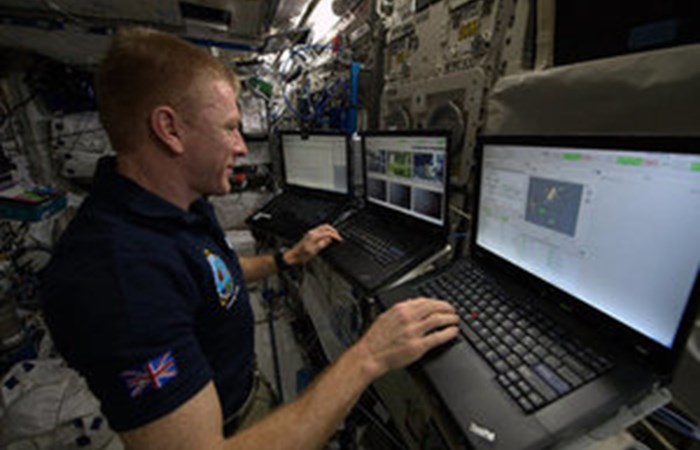Department for Business, Innovation and Skills

On Saturday (18 June 2016), the UK welcomed Tim Peake the UKs first European Space Agency astronaut back to Earth following the successful conclusion of his 6 month Principia mission on board the International Space Station (ISS).
Since captivating the nation when he blasted-off from Kazakhstan on 15 December 2015, Tim Peake was on board the ISS for a total of 186 days. Through Tim Peakes mission and government investment in the European Space Agency, the UK has played a full part in scientific research aboard the International Space Station. Whilst there Tim conducted over 250 scientific experiments and underwent regular testing to record the effect of space and zero-gravity on his bones, muscles and organs research which will help inform manned space missions in the future, including possibly to Mars.
The UK government has also provided over 3 million for educational programmes around Tim Peakes mission to inspire young people to pursue STEM subjects and careers and Tim helped provide 10,000 British schools with plant seeds that experienced life on board the ISS so they can monitor any changes.
During his mission, Tim also found time in April 2016 to set a world record time for running a marathon in space and mesmerised children and adults around the world with his breath-taking photos on Twitter. He was recognised in the Queens Birthday Honours for his work in space research and scientific education - receiving the first ever appointment to the Most Distinguished Order of St Michael and St George for extraordinary service beyond our planet.
Business Secretary Sajid Javid said:
Tim has inspired millions of children and adults alike to take an interest in space exploration and the solar system. Even when he was busy conducting important scientific research for the benefit of us all, he shared every step of his out of this world experience and ran a marathon. He has broken countless records and was rightly recognised for his extraordinary achievements beyond our planet.
Science Minister Jo Johnson said:
Throughout his mission as the UKs first European Space Agency astronaut, Tim Peake embodied the very best of British scientific endeavour and exploration.
With one marathon run, hundreds of experiments conducted and millions of people inspired, Tim has set new heights for British research.
Support for Tims Principia mission, underlines the governments recognition of the strategic value of space to the UKs future. Last year we published our first National Space Policy, which supported industry ambitions to grow the UKs share of the global space market to 10% by 2030 worth 40 billion to the UK and supporting 100,000 new jobs. This set out the governments ambition to establish a spaceport in the UK, and in the Queens Speech it was confirmed we will be putting in place primary legislative and regulatory framework to enable a broad range of safe, commercial spaceflight operations and small satellite launch capabilities from the UK.
Did you know?
- Tims mission, Principia, was named after Sir Isaac Newtons work on the laws of gravity.
- On the mission, Tim worked for up to 14 hours a day.
- He participated in more than 250 experiments.
- In April 2016, Tim Peake remotely controlled a prototype robotic Mars rover in Stevenage, whilst he was on the ISS. It took up to 15 minutes for Tims instruction to be received and actioned by the rover.
- The ISS orbits earth every 91 minutes. During his mission Tim Peake orbited the earth 2,976 times.
- Whilst on the ISS Tim saw 15 or 16 sunrises and sunsets every day.
- Tim started the marathon at the same time as the runners in the London Marathon in April, and finished after 3 hours, 35 minutes and 21 seconds. Because the ISS circles the Earth at a relative velocity of 28,800km/h (17,900mph), Tim covered more than 86,000km (53,000 miles) during his run.
- Astronauts lose up to 1.5% of their bone mass for each month in space. After long spells in space it can take up to 3 years for bones to return to normal
- On entering the Earths atmosphere and its gravitational pull, astronauts experience g-forces that force them to weigh 5 times more than they normally would on earth
- Without gravity, the human spine stretches out so astronauts return taller than when they left.
